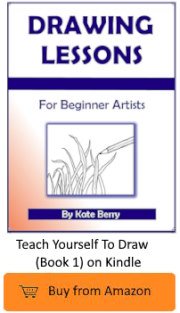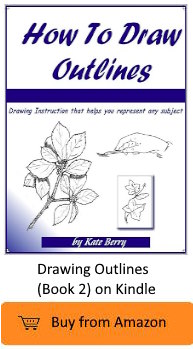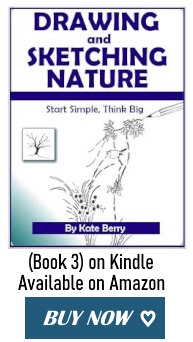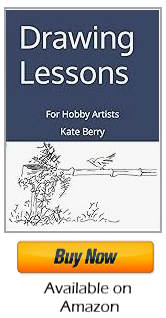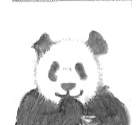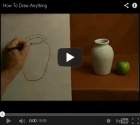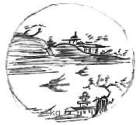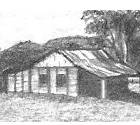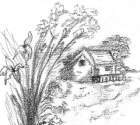Search for images or info
Oriental Drawings
Oriental drawings provide yet another form of pencil artwork for learner artists to explore. They depict what seems like an abbreviated view but there are enough lines and marks to please an audience. Amazingly, they are created without any labor-intensive effort!
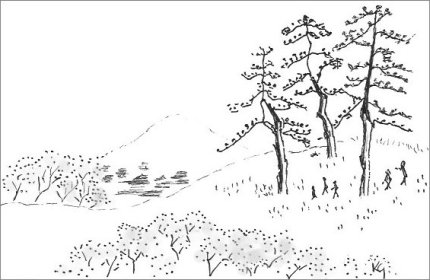
Just by copying this drawing, you'll get a good idea of how easy it is to achieve to a decent reproduction. A blending pencil is used to add the perception of density to the trees in the foreground.
On this page, I reference the particularly minimalistic Oriental drawings from the past but there are many variations and some seem very intricate and complicated.
These images are old so I can make duplicates without worrying about copyright. A good majority of this ancient artwork is done with paint but I love converting them into drawings and gaining satisfaction from those results.
I've been drawing on cards for quite a few years now and receive great feedback from family and friends. It's a win-win situation, I get plenty of practice and if they love the card, they frame it.
This technique is perfect to sketch all kinds of scenery. You can haphazardly insert bits and pieces with just a squiggle but when you step back, you see something else that contributes to making up a story of sorts.
Yes, squiggles become things! I get comments from others about the buildings, people or animals that they can see within a picture. It's thought-provoking to observe the drawing again through their eyes.
Examples of Oriental Drawings
In the background of the image below, trees are shaped with small horizontal strokes. In the foreground, the sparse foliage is fashioned with uneven dots and slight lines because it's closer to the viewer and has to be more distinct for that reason. My initials (KG) are incorporated into the grass (bottom/left).
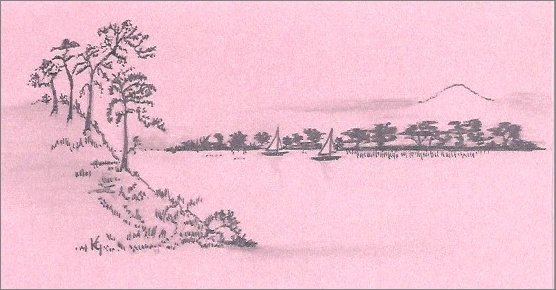
Don't ask me why I chose to draw on a pink card; it just seemed like a good idea at the time! However, do you see the absolute simplicity in the lines of this creation? The only real outline was for 2 boats and there wasn't much thought put into that – thick lines with a triangle on top and that's it.
Categories
Sketches
Instruction
Freebies
Other Areas
** Disclaimer: I receive a small commission if you buy via my links -- at no extra cost to you. **
The boats and their reflections indicate water in the foreground. At the bottom of the picture, a small horizontal line is added (using a blending pencil) to portray the land submerging from the embankment and into the water. A blending pencil was also used to represent cloud surrounding the mountain, with other small touches added here and there.
Typical Japanese Style Drawings:
I first used pencil to draw the bird in bamboo and then went over the finished drawing with a fine felt-tipped pen.
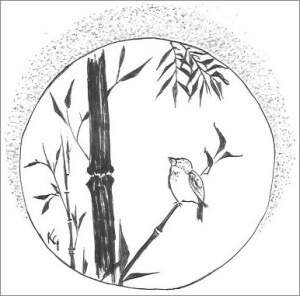
As you can clearly see, I drew the circle freehand and didn't do a very good job of it! I like creating a drawing without using any outside influences; it's what I want to do so I flow with that.
I wait until the ink is definitely dry before I erase any wayward pencil lines. I use a good eraser or a kneaded eraser, whichever is suitable for the paper I used at the time.
When I started this tradition of drawing on birthday cards, I drew the pictures in pencil but I soon discovered that the recipients love to touch the image and rub their fingers over it. Unfortunately, the blurred result isn't pretty, so that was a lesson quickly learned.
The bird consists of a simple outline with added stippling for extra detail. As I viewed the finished illustration, I decided to stipple around the outside of the circle because I felt it looked a bit bare.
The majority of Oriental drawings that I copy are done with paint so I chose a Calligraphy pen to achieve a similar look for the bamboo.
A Calligraphy pen provides a thick or thin line, depending on the way you hold it. Playing with this pen can take you into a whole other world of creative pursuit!
My pen is a bit old now and getting low on ink but I still like the end result.
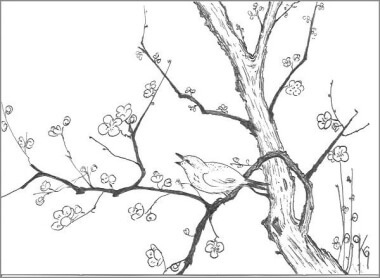
Cherry Blossoms are easy to depict and I think the final image always looks attractive – particularly to people who have never attempted drawing! In the bottom right corner, you can just make out my initials as I tried to integrate them into the drawing and not make them obvious. It's a game I play with myself :)
Quick Doodle Drawing Ideas
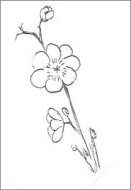
Practicing and copying Oriental drawings has led me to creating and designing my own drawings. That's something I thought I'd never accomplish so there's the proof that persistence pays off!
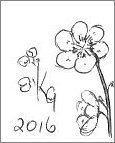
These small cherry blossom drawings are a typical example of what I draw on the back of the card or envelope.
It's not a good illustration because cherry blossoms only have 5 petals but not everyone knows that fact and there is a resemblance.
It's just eye candy and it does the job. : )
It really depends on how much time I have for embellishment but I usually draw something that reflects the image on the card.
About Eastern Art
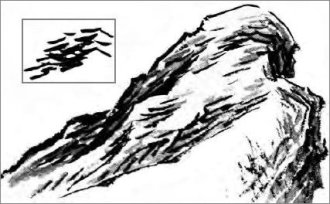
Painting is a popular pastime in the Orient and I find some aspects of their artwork completely remarkable.
The inset in this picture shows the strokes used to create a rocky outcrop.
I'm fascinated with their straightforward illustrations and how they can depict any subject with a swift stroke or two.
Oriental artists also have a magnificent talent using a brush to do calligraphy.
Japanese art and Chinese art are very similar but I'm not even going to attempt to differentiate between the two, I'll leave that to the experts. This page about the history of Asian Art was the best one I found for elaboration on the topic.
Guidance For Beginner Artists:
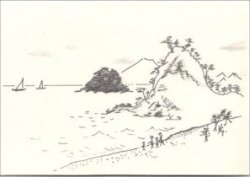
Learning from past artists is useful for all students so you can figure out what resonates with you and from there you let your passion lead you, to follow your own chosen path.
This is important because when you're learning anything to do with art, you have to observe inner nudges and find/pursue what interests you the most.
If you feel any anxiousness or distaste for something that you're advised or instructed to do – that is NOT your path!
Notice and monitor your reactions. It is by tuning into your intuitive (gut) feelings that you truly discover how and what you want to draw.
I've learned so much just by copying Oriental drawings so I hope this information can help to steer you in the right direction.
Click a link below to view a variety of pencil illustrations:
There's more for you to enjoy...
* Allaboutdrawings.com is a participant in the Amazon Services LLC Associates Program, an affiliate advertising program designed to provide a means for sites to earn advertising fees by advertising and linking to Amazon.com.
Copyright © 2005 - 2025 www.allaboutdrawings.com. All rights reserved.





